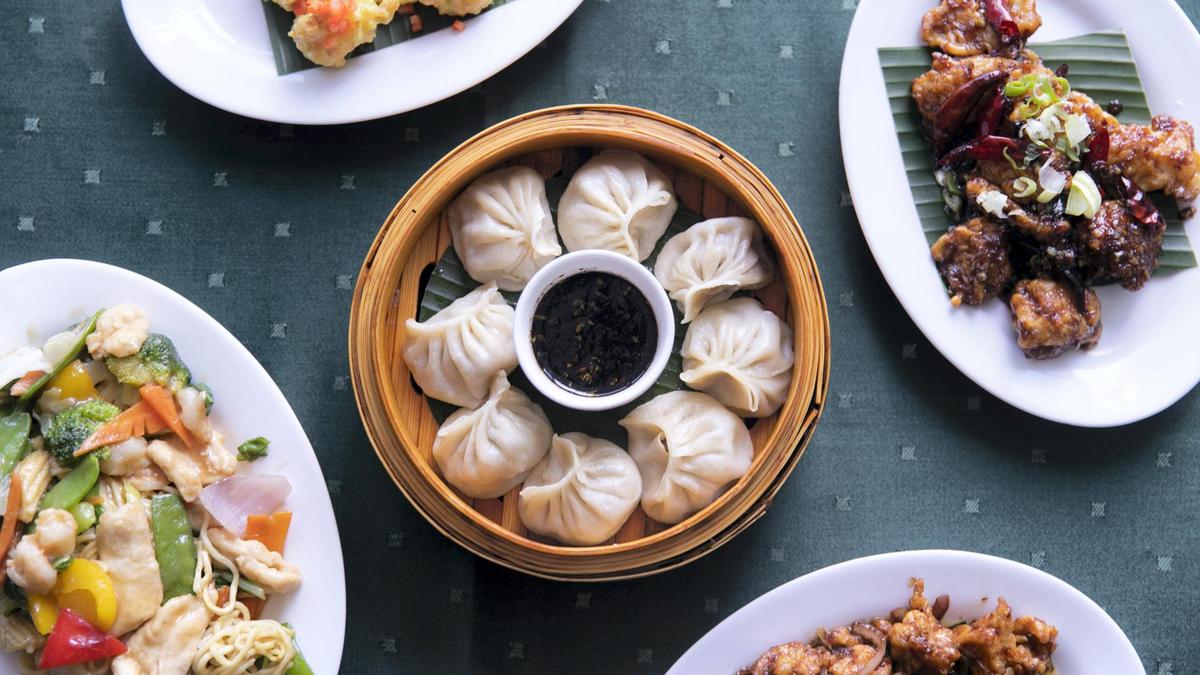The salted fish fried rice is an easy dish. In a Cantonese specialty, the cured flesh is chopped up into tiny pieces, gently fried, and then introduced to rice, which can have a medley of other ingredients, from bird to pork and beef to seafood, depending on location and religious nutritional necessities. It can be repulsive because of the acrid smell of the fish. However, the flavor and aroma can take your breath away. Still, in Mumbai’s Ling’s Pavilion, this unassuming dish, pepped up with a generous dose of chili oil, is an unforgettable explosion on the palate. It’s the nearest to an actual Chinese word in India.
 How and why did Indian-Chinese meals become?
How and why did Indian-Chinese meals become?
As a top British territory in Asia, India became the proverbial greener pasture, which everyone migrated from the 18th century. This blanketed the vast majority of Chinese travelers from the south of the usa – Cantonese and Hakka – who sailed to Calcutta (now Kolkata), the capital of India’s West Bengal state, after which they moved to different cities like Mumbai. As they settled in and constructed a network in Kolkata, Cantonese and Hakka cuisines appeared on menus across the metropolis, in roadside stalls and hole-in-the-wall spots.
“Most those who migrated at the time had been terrible and needed to depart their households at the back of,” says James Lee, who runs Sei Vui eating place in Kolkata. “Only a few women have been present then, and they started to serve homely food with their husbands as a facet commercial enterprise.” These mushroomed into loads of restaurants, and these days, the metropolis has India’s handiest Chinatown, which has emerged because of the unofficial home of Indian-Chinese delicacies. “In my opinion, Bengalis are the simplest Indian community who like to test with meals,” Lee provides.
“Indian-Chinese meals is the education of Chinese meals to match Indian flavor buds,” says Pemba Tsering of Kolkata’s How Hua eating place. “Authentic Chinese meals are generally supposed to be bland. Indian-Chinese meals are ready with extra spices like chillis, onions, etc.” When we ask Baba Ling, the proprietor of Ling’s Pavilion, what exactly Indian-Chinese food is, he laughs. “Coriander, Mirchi [spice], pudina [mint], and black soy sauce,” he says. In practice, maximum dishes on menus throughout India have little to do with traditional Chinese delicacies, he shows.
Ling’s is arguably the most effective true Chinese eating place in Mumbai – a stark contrast to the myriad eateries in Kolkata – and an offshoot of Nanking, which opened in 1945. Nanking may have to close up save in India’s largest town. However, it remains a roaring achievement in Ahmedabad and New Delhi, an Indian group; ambassadors of Asian countries and outstanding actors, businesspeople, entrepreneurs, and artists swear by it. Ling’s Pavilion, however, is the most effective iteration of that restaurant, which bears its family call.
The lack of authenticity across Chinese cuisine in India appears to be a sticking factor for Ling. He recounts the story of a Gujarati gentleman he encountered lower back in the Nineteen Seventies to display the general confusion. He wouldn’t eat the fried rice he served as it had no coriander, and was dubious of its origin. “The poor guy ought to have eaten at a ‘true’ Chinese shack on a few seashores in Mumbai and thought this is what Chinese food is,” he says.
A mishmash of elements
One of the main reasons this hybridization of traditional Chinese meals crept into the Indian eating scene was that migrants in the 1700s had to use anything available inside the markets. And, as with anywhere inside the globe, the satisfaction and variety of ingredients varies. For example, in East India, freshwater fish is a extensive part of everyday food. However, these do not lend themselves to Chinese spices. A chili fish dish will likely be prepared with basa, a not-unusual Southeast Asian catfish, which isn’t particularly flavourful, so clients tend to move for bird and meat at the side.
Vegetables such as cabbage, carrots, and bell peppers are common, unlike native Asian greens like choy sum, gai-lan, and baby spinach. Prawns and shrimp are also popular, with crab and lobster verging at the distinct. The conventional Indian-Chinese fried rice and chili bird dish are ubiquitous and now heavily produced. Commonly, it comes packed with a cornstarch-based gravy some distance from the real deal. But, Lee points out that if they have been serving real Chinese veggies and greens today, Indian customers might be done away with by the unfamiliarity of components.


 How and why did Indian-Chinese meals become?
How and why did Indian-Chinese meals become?